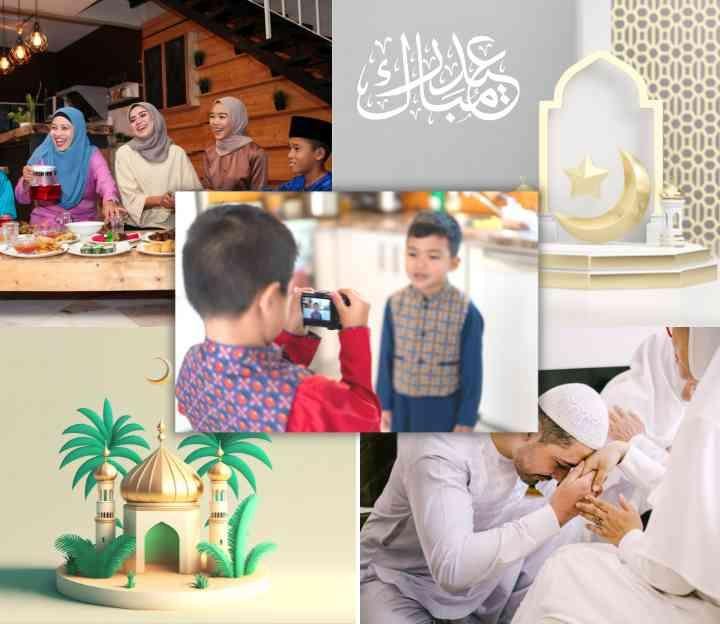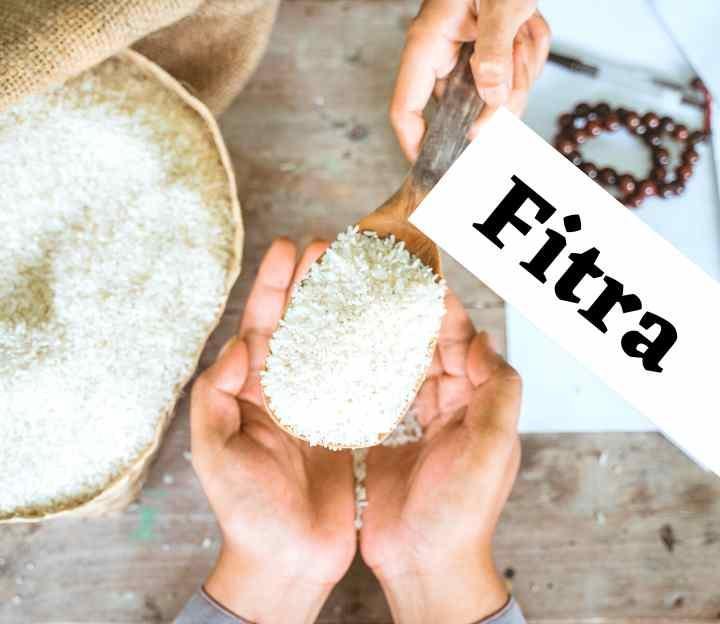Muslims all over the globe celebrate Eid ul Fitr with immense excitement and fervor. It is a time for families to gather, feast, and engage in acts of charity. Here, you can find details about when is Eid ul Fitr 2023, its history, importance, festivities, and more.

Eid ul Fitr is a significant and prominent Islamic festival that commemorates the conclusion of the sacred month of Ramadan, during which Muslims observe a month-long fast. The celebration of Eid al-Fitr is anticipated to take place from Friday, 21 April 2023, to Sunday, 23 April 2023, but the precise date may differ based on the sighting of the moon.
What is Eid ul Fitr?
Eid ul Fitr 2023 is an important religious festival celebrated by Muslims worldwide. It marks the end of the holy month of Ramadan, a period of fasting observed by Muslims around the world. The festival is expected to take place on or around 21 April 2023, depending on the sighting of the moon.
The origins of Eid ul Fitr date back to the 7th century when Prophet Muhammad(SAW) founded Islam. The Holy Qur’an was revealed to Prophet Muhammad(SAW) during the month of Ramadan. It marks the end of the holy month of Ramadan and is celebrated with great enthusiasm and joy by Muslims around the world.
Send Beautiful Eid ul Fitr 2023 Wishes to your Friends and Family
How is Eid ul Fitr Celebrated Around the World?
Eid ul Fitr, which means “Festival of Breaking the Fast,” signifies the end of the fasting period throughout Ramadan. It marks the beginning of the succeeding month of Shawwal.
Here’s a look at how Eid ul Fitr is celebrated in different parts of the world:
- Middle East: In countries like Saudi Arabia, UAE, and Qatar, Eid ul Fitr there are grand feasts, family gatherings, and exchange of gifts. People wear new clothes and visit friends and relatives to exchange greetings and sweets. It is also a time for charity and giving to the less fortunate.
- South Asia: In countries like Pakistan, India, and Bangladesh, Eid ul Fitr is celebrated with traditional fervor. People start preparing for the festival days in advance, with shopping for new clothes, jewelry, and home decorations. Special Eid prayers are held in mosques, followed by feasts and family gatherings. People distribute sweet dishes like sheer khurma and seviyan among friends and neighbors.
- Africa: In African countries like Egypt, Sudan, and Morocco, there are unique traditions and rituals. People decorate their homes and streets with lights and colorful banners. It is a time for family reunions, charity, and sharing food with neighbors and friends. In some countries, it is also a time for cultural festivals and music performances.
- Europe: In European countries with significant Muslim populations, like Turkey and Bosnia, You may find a mix of traditional and modern customs. People dress up in their best clothes, attend special prayers, and share festive meals with family and friends. In some cities, there are also cultural events and bazaars that showcase traditional arts, crafts, and food.
- North America: In the United States and Canada, People celebrate Eid ul Fitr with special prayers, feasts, and family gatherings. In some cities, there are also public events and festivals that promote cultural diversity and understanding.
In conclusion, Muslims celebrate Eid ul Fitr around the world with unique customs and traditions. It is a time for family, community, and charity, and a reminder of the importance of compassion, forgiveness, and togetherness in our lives.
What is Fitra in Ramadan?
Fitra comes from the word “Fitr” which is a synonym for “Iftar“. Therefore, it means “Breaking of Fast“. Muslims give this as a charitable donation during the month of Ramadan, which is the holy month of fasting in Islam. The purpose of Fitra is to help those in need and ensure that everyone has enough to eat during Ramadan.

How is Fitra Calculated?
Fitrah is a compulsory donation given by Muslims during the holy month of Ramadan. The amount of Fitrah payable is known as a “sa’a“, which is the minimum prescribed amount. The sa’a is the same for everyone, regardless of their income levels. Traditionally, one sa’a is equivalent to approximately 2.176 kg or two handfuls of food, grain, or dried fruit.
Abu Sa’eed al-Khudree mentioned that , “On behalf of our young and old, free men and slaves, we used to take out one sa’a of grain, cheese or raisins during Allah’s Messenger’s (SAW) lifetime”. [Sahih Muslim 2:469 (2155)]
The calculation of the sa’a is based on a report by Ibn ‘Umar, in which he mentions that the Prophet Muhammad (peace be upon him) made Fitrah compulsory and payable by a sa’a of dried dates or a sa’a of barley. Therefore, the sa’a is the standard unit of measurement for Fitrah payment.
It’s worth noting that the value of the sa’a may vary depending on the cost of living in a particular area. Hence, consult with local Islamic scholars or organizations to determine the appropriate amount of Fitrah to be paid in a specific area.
Why is it Obligatory to give Fitra?
Ibn Abbas(r.a.) reported , “The Prophet (SAW) made Fitrah compulsory so that those who fasted may be purified of their idle deeds and shameful talk (committed during Ramadan) and so that the poor may be fed. Whoever gives it before Eid prayer will have it accepted as Zakat, while he who gives it after the prayer has given Sadaqah.” [Abu Dawood 2: 421 (1605)]
Giving Fitrah ensures that everyone pays the same amount, irrespective of their income brackets. It is a way to promote equality and help those in need during Ramadan. Muslims pay their Fitrah before the Eid prayer, which marks the end of Ramadan. By doing so, they can help those in need during the holy month and fulfill their religious obligations in Islam.
In summary, the sa’a is the minimum prescribed amount of Fitrah payable and is the same for everyone. It is an important part of Fitrah calculation and ensures that everyone has an equal opportunity to contribute to charity during Ramadan.
1 thought on “What is Eid ul Fitr?”